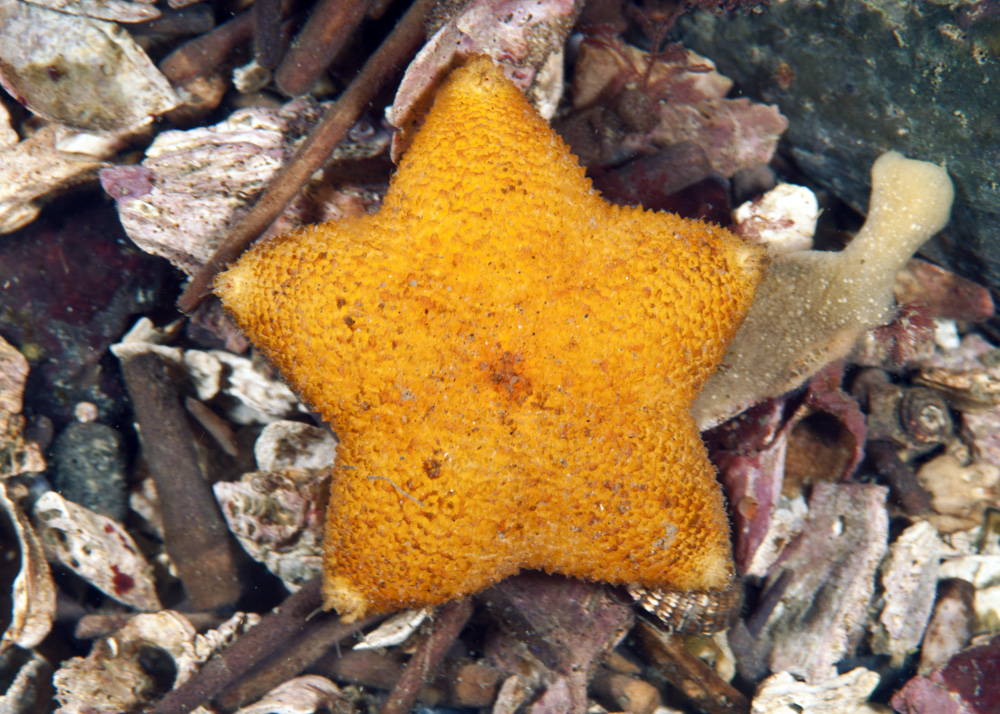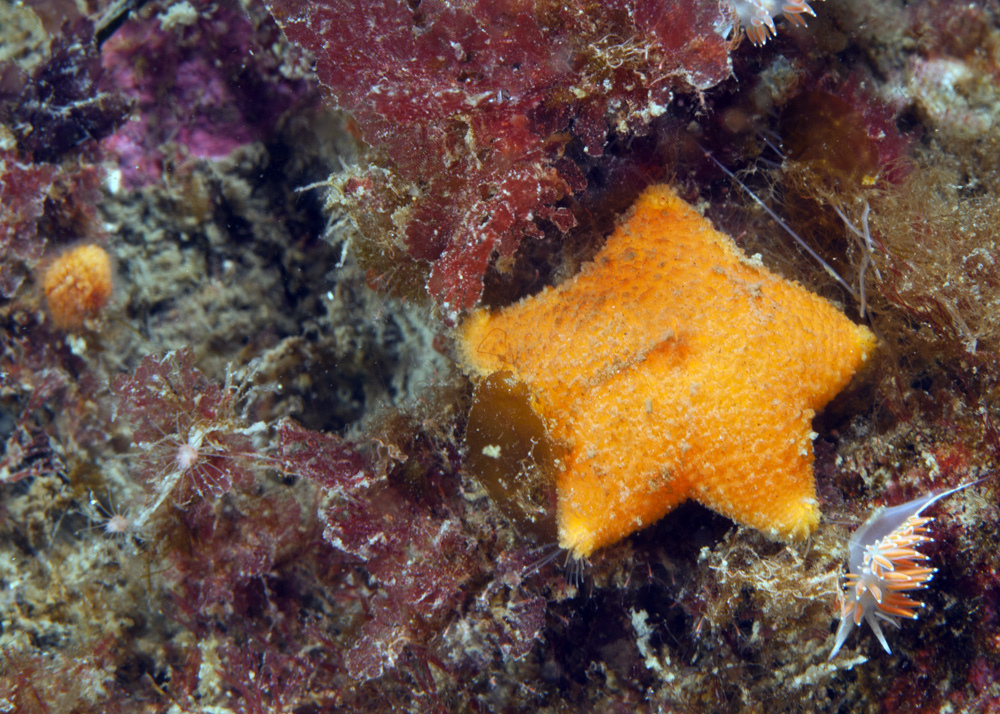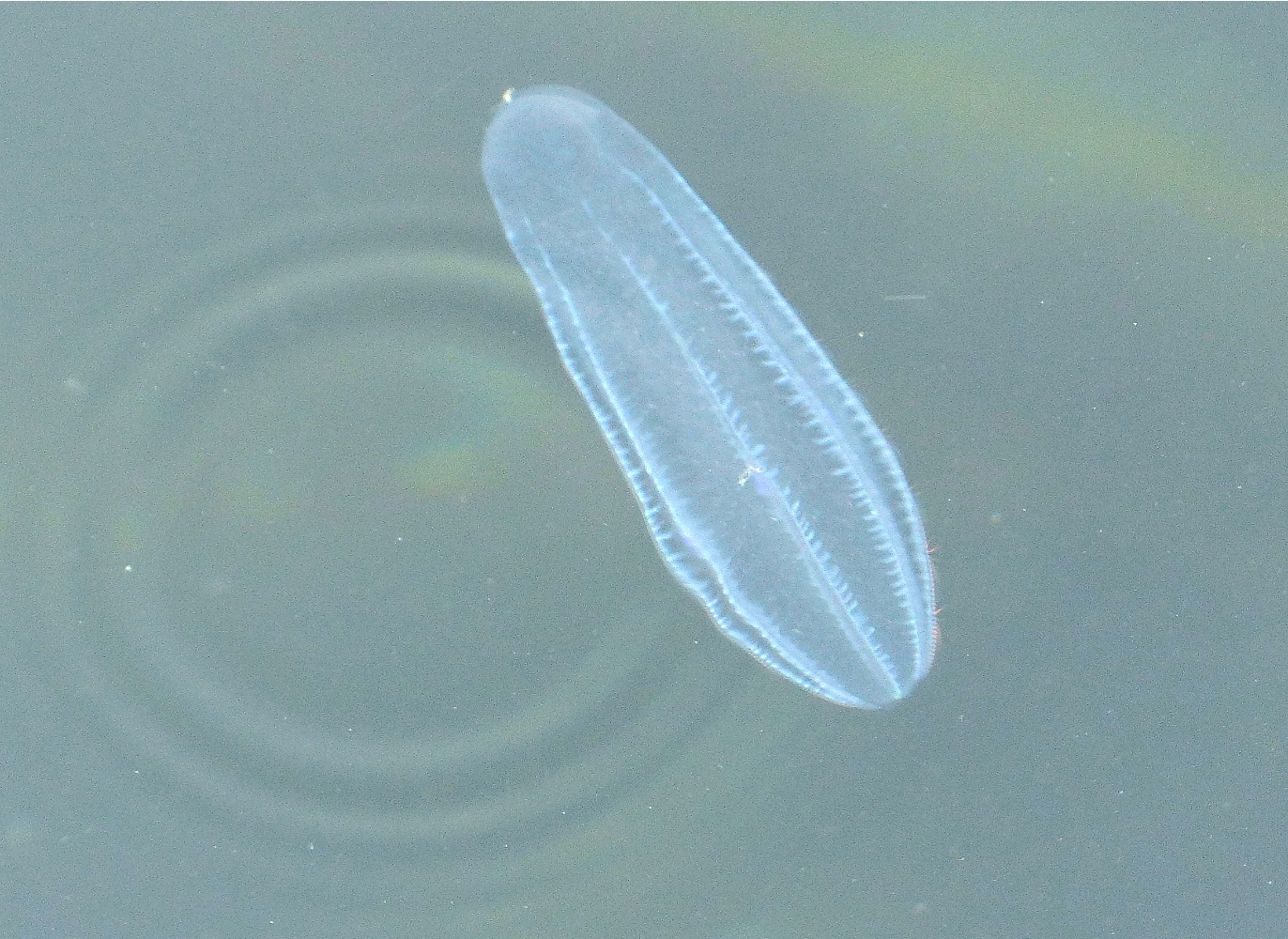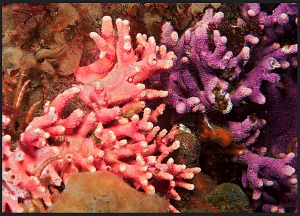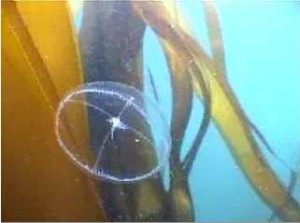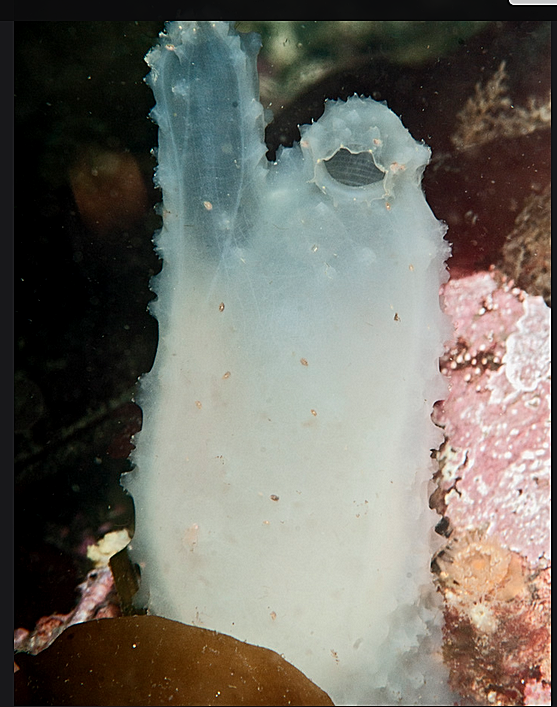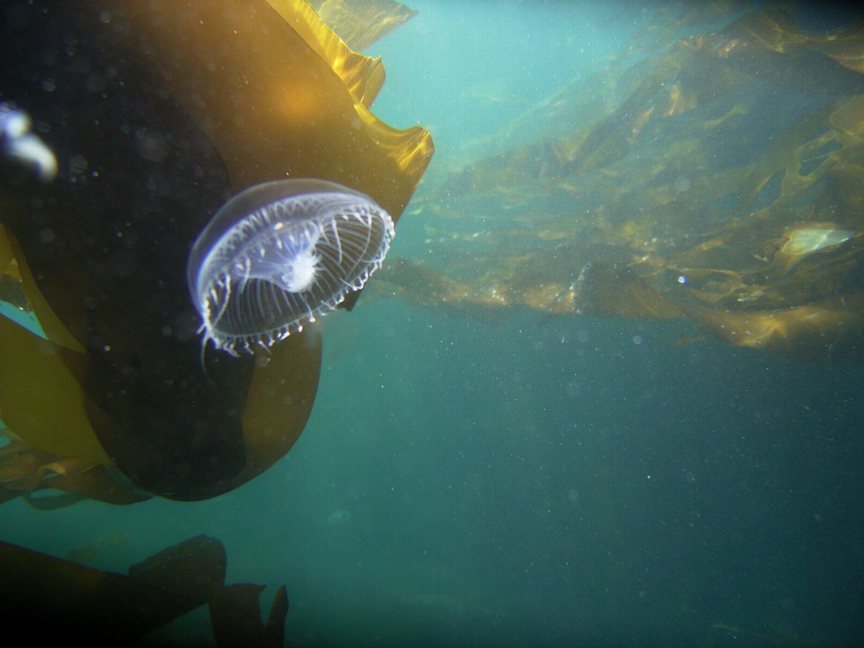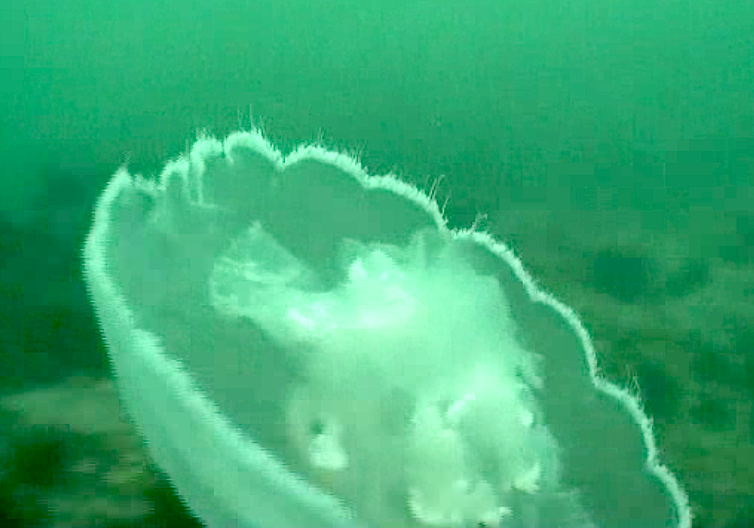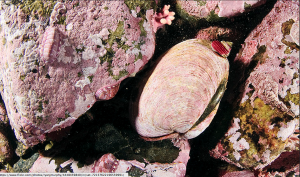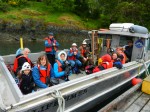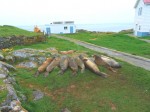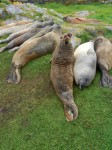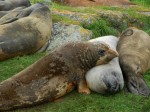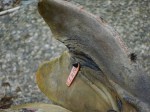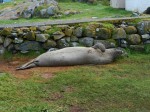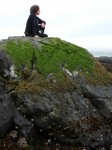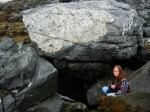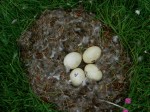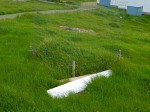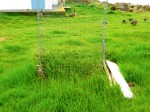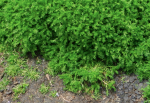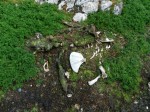Today was a quiet day, weather-wise, with none of the drama of yesterday. We are slipping quietly into autumn with light winds. The wind has gone almost full circle today, from southeast and rain in the early morning to light westerly in the afternoon and now light to northeasterly breezes as the sun sets. The barometer climbed a little out of its slump and is beginning to fall again as day ends.
There was quite a bit of traffic in the reserve today with whales to the west. A total of 17 tour boats were noted, stopping by to view seals and sea lions. Many more went by fast, well on either side of the reserve.
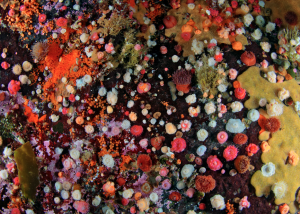
A field of Epiactis prolifera, showing the high variability in colouration– photo by Ryan Murphy.
Few ecological observations were made today, although I did notice Cross-jellies in the water off the jetty when I was sampling seawater. Cross-jellies or Microcoma cellularia, have four radial canals which make an X on their fairly flat bell which is why they are called cross-jellies. They are one of a few hydromedusae that have been shown to seek out food by smell or chemosensory reception. They were in the very smelly, sea lion “gack” water and probably pulled in here by the tidal currents but it is cool to contemplate that an animal with no brain can make choices and behave in certain ways to achieve things.
The marine invertebrate life at Race Rocks is really rich. Even the inter-tidal is spectacular and the sub-tidal has even more species and layres. Even though it is fairly close to Victoria, the marine ecology of the Reserve is more like the wave-exposed open coast habitat that I am used to in Nuu-chah-nulth-aht territories. A lot of the productivity and diversity here has to do with the amazing currents and the upwelling they produce.
Today was a day of small projects including getting the EPIRB information off of the Whaler, stowing gasoline, doing radio checks and radio watch for CAS, fixing the fence and trying to fix the wind direction indicator input. I am really looking forward to working with three first year Marine Science classes from Pearson College this week and the first students arrive tomorrow. I hope they enjoy observing the sea lions and adding to their journals with new species entries.
 The Race Rocks taxonomy is a collaborative venture originally started with the Biology and Environmental Systems students of Lester Pearson College UWC. It now also has contributions added by Faculty, Staff, Volunteers and Observers on the remote control webcams. 2014 Garry Fletcher
The Race Rocks taxonomy is a collaborative venture originally started with the Biology and Environmental Systems students of Lester Pearson College UWC. It now also has contributions added by Faculty, Staff, Volunteers and Observers on the remote control webcams. 2014 Garry Fletcher
